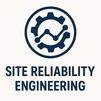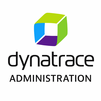.jpg)
The AWS Certified SysOps Administrator (SOA-C02) Training provides comprehensive knowledge of deploying, managing, and operating AWS-based infrastructures. It focuses on monitoring, automation, fault tolerance, data management, and security best practices. Through hands-on labs and real-world scenarios, learners master services like EC2, RDS, S3, CloudWatch, and CloudFormation. This course is designed for IT professionals seeking to validate their operational expertise, enhance cloud efficiency, and confidently prepare for the AWS SysOps Administrator – Associate certification exam.
AWS Certified Sysops Admin SOA-C02 Training Interview Questions Answers - For Intermediate
1. What is the difference between horizontal and vertical scaling in AWS?
Horizontal scaling, also known as scaling out, involves adding more instances or servers to distribute the workload across multiple machines—for example, increasing EC2 instances behind a load balancer. Vertical scaling, or scaling up, involves upgrading the existing machine with more CPU, RAM, or storage resources. While vertical scaling is simpler to implement, horizontal scaling offers better fault tolerance and elasticity, especially for distributed applications.
2. How does AWS Elastic Load Balancing (ELB) contribute to high availability?
Elastic Load Balancing automatically distributes incoming application traffic across multiple targets such as EC2 instances, containers, or IP addresses within one or more Availability Zones. It ensures that no single instance is overwhelmed and performs health checks to reroute traffic from unhealthy targets. This enhances both availability and fault tolerance, allowing applications to handle varying traffic loads seamlessly.
3. What are AWS Placement Groups and their types?
Placement Groups are logical groupings of EC2 instances designed to influence how instances are placed within AWS infrastructure. There are three types: Cluster (for low-latency, high-performance workloads), Spread (to minimize simultaneous failure risk by distributing instances across hardware), and Partition (ideal for large-scale distributed systems like Hadoop). Choosing the right placement group depends on the workload’s performance and resilience needs.
4. What is the difference between AWS Config and AWS CloudTrail?
AWS Config tracks configuration changes to AWS resources and evaluates them against compliance rules, while CloudTrail logs API activity and user actions. Config focuses on what has changed and whether it complies with policies, whereas CloudTrail answers who made the change and when. Together, they provide a complete picture of operational governance and security auditing.
5. Explain the purpose of AWS OpsWorks.
AWS OpsWorks is a configuration management service that automates the deployment and operations of applications using Chef or Puppet. It helps define infrastructure as code, manage servers consistently, and automate tasks such as patching or software installation. OpsWorks is particularly useful for hybrid environments and provides lifecycle management for instances throughout their runtime.
6. How can one secure data at rest and in transit in AWS?
Data at rest can be secured using AWS Key Management Service (KMS) for encryption, enabling server-side encryption in services like S3, EBS, and RDS. Data in transit is protected using protocols such as HTTPS and SSL/TLS. Enforcing IAM roles and resource policies ensures that only authorized users or applications can access encrypted data, maintaining confidentiality and integrity.
7. How does AWS CloudFront improve web application performance?
Amazon CloudFront is a Content Delivery Network (CDN) that caches content at edge locations globally, reducing latency by serving requests from the nearest node. It accelerates the delivery of static and dynamic content, improves reliability through caching and origin failover, and integrates with AWS Shield and WAF for enhanced security. This makes it ideal for scalable, fast, and secure content delivery.
8. What is the significance of AWS Service Limits and how can they be managed?
AWS enforces service limits (quotas) to prevent excessive resource usage and maintain system stability. These limits vary by service, such as EC2 instance counts or Elastic IPs per region. Administrators can monitor limits through the AWS Service Quotas console and request increases when necessary. Proper monitoring prevents disruptions caused by hitting default limits unexpectedly.
9. How does AWS Lambda differ from EC2 in terms of deployment and cost model?
AWS Lambda follows a serverless architecture where users only pay for the compute time consumed during function execution, eliminating the need to manage infrastructure. EC2, on the other hand, requires provisioning and managing virtual machines, with billing based on uptime. Lambda is ideal for event-driven, short-lived processes, while EC2 suits long-running or custom OS-dependent workloads.
10. How does Amazon EFS differ from Amazon EBS and S3?
Amazon EFS (Elastic File System) is a scalable, shared file storage system that can be accessed by multiple EC2 instances simultaneously. Unlike EBS, which provides block storage for single-instance attachment, EFS offers concurrent access and automatic scaling. Compared to S3’s object storage, EFS provides POSIX-compliant file system interfaces, making it ideal for applications requiring standard file operations.
11. What is AWS CloudFormation Stack Drift Detection?
Stack Drift Detection in AWS CloudFormation identifies differences between the actual configuration of AWS resources and the expected configuration defined in the CloudFormation template. When administrators make manual changes outside of CloudFormation, drift detection helps pinpoint non-compliance and enables corrective action. It ensures infrastructure integrity and consistency across automated deployments.
12. What are the benefits of using AWS Elastic Beanstalk?
AWS Elastic Beanstalk simplifies the deployment and scaling of web applications by automatically handling capacity provisioning, load balancing, and application health monitoring. Developers can upload their code, and Beanstalk takes care of the underlying infrastructure. It supports multiple programming languages and integrates with other AWS services, making it ideal for quick deployments without extensive DevOps overhead.
13. How does AWS GuardDuty help improve security posture?
Amazon GuardDuty is a threat detection service that continuously monitors AWS accounts, workloads, and data for malicious activity. It analyzes logs from CloudTrail, VPC Flow Logs, and DNS queries to identify suspicious behavior such as compromised instances or unauthorized API calls. GuardDuty provides actionable alerts that enable faster incident response and continuous threat visibility.
14. What is the function of AWS Transit Gateway?
AWS Transit Gateway simplifies network connectivity by allowing multiple VPCs and on-premises networks to interconnect through a central hub. It reduces complex peering arrangements and improves scalability by managing traffic routing in a single place. This design enhances efficiency, reduces operational overhead, and supports hybrid cloud architectures with consistent policy enforcement.
15. How can AWS Budgets help with cost management?
AWS Budgets enables organizations to set custom cost and usage thresholds, sending alerts when spending approaches or exceeds defined limits. It integrates with AWS Cost Explorer for visualization and forecasting, allowing proactive financial management. By providing detailed insights into cost trends and resource utilization, AWS Budgets helps maintain accountability and prevent unexpected billing surprises.
AWS Certified Sysops Admin SOA-C02 Training Interview Questions Answers - For Advanced
1. How can AWS CloudWatch Logs Insights be used to troubleshoot distributed applications?
CloudWatch Logs Insights allows administrators to interactively query and analyze log data from multiple AWS services, including EC2, Lambda, ECS, and API Gateway. In a distributed application where requests traverse several microservices, centralized logging becomes critical for diagnosing latency or failures. By aggregating logs across services, CloudWatch Logs Insights can be used to filter specific request IDs, correlate events, and detect anomalies in execution patterns. Custom queries can extract key metrics like response times or error codes, which are then visualized using CloudWatch Dashboards for trend analysis. This approach eliminates the need to manually sift through disparate logs and enables rapid identification of performance bottlenecks or systemic errors, especially when combined with CloudWatch metrics and X-Ray traces.
2. How can AWS Lambda and EventBridge together enable event-driven automation in infrastructure operations?
AWS Lambda and EventBridge form the foundation of event-driven automation by responding to system or application events in real time. EventBridge captures events from AWS services (e.g., EC2 state changes, S3 uploads, IAM modifications) or custom applications and routes them to Lambda functions. This allows administrators to automate actions such as scaling infrastructure, rotating credentials, or notifying teams when thresholds are breached. For instance, an EC2 termination event can trigger a Lambda function to de-register the instance from a load balancer and update DNS entries. By decoupling event producers and consumers, EventBridge and Lambda improve system responsiveness, reduce operational overhead, and support modular automation pipelines that scale seamlessly with organizational growth.
3. What is the purpose of AWS Control Tower Guardrails, and how do they enhance governance?
AWS Control Tower Guardrails are pre-configured governance rules designed to enforce compliance and security across multi-account AWS environments. They are divided into preventive and detective controls — preventive guardrails restrict specific actions through Service Control Policies (SCPs), while detective guardrails continuously monitor accounts using AWS Config rules. Examples include preventing public S3 buckets or ensuring CloudTrail is enabled in all accounts. These guardrails ensure that even newly created accounts inherit organizational policies automatically. For large enterprises managing hundreds of accounts, Guardrails reduce administrative complexity, promote consistency, and ensure regulatory compliance without requiring constant manual oversight.
4. How can AWS Systems Manager Automation integrate with CloudFormation for zero-touch remediation?
AWS Systems Manager Automation integrates with CloudFormation by enabling self-healing infrastructure that responds automatically to drift or failure. When CloudFormation detects drift or stack resource failure, it can trigger a Systems Manager Automation runbook through EventBridge. This runbook can execute tasks such as restarting failed EC2 instances, reconfiguring IAM permissions, or restoring a database snapshot. Because both services are natively integrated with IAM and CloudTrail, the entire process is auditable and secure. This integration not only ensures consistent configuration management but also enables zero-touch remediation—reducing downtime and human error while enhancing operational resilience.
5. How does AWS Config Conformance Packs improve compliance management?
AWS Config Conformance Packs bundle multiple AWS Config rules into a single deployable unit to enforce organizational compliance standards consistently. Instead of manually managing dozens of individual rules, administrators can deploy a pre-defined Conformance Pack, such as the “Operational Best Practices for Security” pack, across multiple accounts and regions. Each pack evaluates resources against compliance baselines, generating detailed dashboards and reports. Violations automatically trigger remediation actions through Systems Manager Automation. This centralized approach simplifies governance, accelerates audit readiness, and ensures that compliance enforcement remains synchronized across all business units.
6. How does Amazon Detective complement GuardDuty and Security Hub in threat analysis?
Amazon Detective analyzes and visualizes security findings from GuardDuty, CloudTrail, and VPC Flow Logs to simplify root cause analysis. When GuardDuty detects suspicious behavior—such as unusual API activity or a compromised instance—Detective automatically builds an interactive graph of related entities, such as IAM roles, IP addresses, and resources involved. Analysts can trace activity timelines and relationships, identifying how an incident originated and spread. Unlike GuardDuty, which detects threats, Detective focuses on contextual investigation. When integrated with Security Hub, it provides a unified threat intelligence workflow, enabling faster incident response and minimizing investigation time through deep cross-service correlation.
7. What strategies can optimize database performance in Amazon RDS for production workloads?
Optimizing RDS performance involves a combination of instance sizing, query optimization, and storage tuning. Administrators should select an instance class suited for the workload—compute-optimized for analytical tasks or memory-optimized for OLTP systems. Enabling Performance Insights allows identification of slow queries and resource bottlenecks. Using read replicas helps distribute read-heavy traffic, while Multi-AZ deployments enhance fault tolerance. Provisioned IOPS storage should be configured for high I/O applications, and automated backups should be scheduled during low-traffic windows. Parameter groups can fine-tune database engine behavior, while caching layers such as ElastiCache further reduce query latency. Monitoring with CloudWatch ensures continuous visibility into performance metrics for proactive tuning.
8. How can AWS CloudTrail Lake transform auditing and governance?
CloudTrail Lake extends traditional CloudTrail capabilities by enabling advanced querying and analytics on historical API activity logs. Instead of exporting raw logs to S3 for external analysis, administrators can use SQL-based queries directly within CloudTrail Lake to identify policy violations, user anomalies, or resource misconfigurations. Data from multiple accounts and regions can be aggregated into a single, queryable data lake, significantly simplifying audit preparation. Integration with CloudWatch and EventBridge allows real-time alerts based on query results, while built-in retention controls support compliance with data residency and archival requirements. This evolution of CloudTrail transforms governance from reactive auditing to continuous, data-driven oversight.
9. How can hybrid environments be securely connected using AWS Direct Connect and VPN?
AWS Direct Connect provides a dedicated, low-latency private connection between on-premises data centers and AWS, while VPN offers encrypted tunnels over the internet. Combining both establishes a hybrid architecture that ensures resilience and security. Direct Connect serves as the primary connectivity channel for predictable performance, and VPN acts as a failover path in case of link failures. BGP routing dynamically manages failover and redundancy, maintaining uninterrupted connectivity. This dual approach secures data transfer, minimizes latency for critical workloads, and supports hybrid cloud models where on-premises systems interact seamlessly with AWS resources.
10. How can tagging strategies enhance cost allocation and automation in AWS?
Tagging resources with structured metadata—such as cost center, project, owner, and environment—enables fine-grained visibility and control across AWS environments. AWS Cost Explorer and Budgets can filter usage by tags, supporting precise chargeback and cost attribution. Beyond billing, tags facilitate automation by allowing Systems Manager or Lambda functions to perform actions based on resource tags, such as stopping “non-production” instances outside business hours. Enforcing tag compliance using AWS Config rules ensures consistency, while Service Catalog TagOptions standardize approved tag values. This disciplined approach enhances financial governance, simplifies management, and enables large-scale automation through policy-driven operations.
11. How does AWS Auto Scaling integrate predictive scaling for dynamic workloads?
Predictive scaling in AWS Auto Scaling leverages machine learning to forecast future traffic and automatically adjust resource capacity. Using CloudWatch historical data, predictive models estimate demand for the next 48 hours and create scheduled scaling actions. This feature eliminates reaction lag inherent in traditional threshold-based scaling, particularly for workloads with periodic traffic spikes. Predictive scaling works in tandem with dynamic scaling policies to provide both proactive and reactive elasticity. The result is improved application performance during surges, reduced idle capacity during lulls, and overall cost efficiency through intelligent capacity management.
12. What are the benefits of AWS Service Catalog in enterprise operations?
AWS Service Catalog enables IT administrators to define, manage, and distribute approved AWS resources and configurations across an organization. It acts as a curated repository of pre-approved templates, ensuring that deployments comply with security and compliance standards. End-users can self-provision infrastructure without requiring full administrative access, reducing operational bottlenecks. Integrated with IAM and AWS Organizations, Service Catalog enforces access control while maintaining governance. It supports versioning, allowing teams to roll back to previous configurations safely. For enterprises, this fosters agility while maintaining compliance and operational consistency at scale.
13. How can AWS X-Ray assist in debugging microservice architectures?
AWS X-Ray provides distributed tracing for applications built on microservices, enabling visibility into how individual services interact. Each incoming request is traced through various services, with performance data and latency visualized through a service map. X-Ray identifies bottlenecks, slow database queries, or misconfigured APIs by capturing traces across EC2, ECS, Lambda, and API Gateway. Sampling mechanisms ensure efficiency, while annotation and metadata provide context for debugging. Integrating X-Ray with CloudWatch Alarms enables automatic alerts when latency thresholds are breached. This holistic tracing capability allows teams to pinpoint failures in complex, distributed systems quickly and accurately.
14. What measures can ensure operational excellence in AWS using the Well-Architected Framework?
Operational excellence within AWS is achieved by continuously aligning infrastructure design with the Well-Architected Framework’s five pillars—operational excellence, security, reliability, performance efficiency, and cost optimization. The Operational Excellence pillar emphasizes automation of deployments, consistent documentation, and proactive monitoring. Tools such as AWS Well-Architected Tool, Trusted Advisor, and Config support periodic reviews to identify deviations from best practices. Implementing observability with CloudWatch, enabling self-healing mechanisms through Lambda automation, and conducting game days for failure testing ensure resilience. By following these guidelines, organizations create a culture of continuous improvement that enhances both system reliability and business agility.
15. How can AWS Backup policies support enterprise-scale data governance?
AWS Backup centralizes and automates backup management across AWS services such as RDS, EBS, DynamoDB, and EFS. Through backup plans, administrators can define schedules, retention policies, and lifecycle transitions to cold storage, ensuring cost-effective data protection. Cross-region and cross-account backup capabilities strengthen disaster recovery strategies. Integration with AWS Organizations enables consistent enforcement of backup policies enterprise-wide. Backup Audit Manager generates compliance reports, verifying adherence to regulatory frameworks like GDPR or HIPAA. This policy-driven approach not only ensures data durability but also establishes governance by unifying backup operations across diverse business units.
Course Schedule
| Dec, 2025 | Weekdays | Mon-Fri | Enquire Now |
| Weekend | Sat-Sun | Enquire Now | |
| Jan, 2026 | Weekdays | Mon-Fri | Enquire Now |
| Weekend | Sat-Sun | Enquire Now |
Related Courses
Related Articles
- SAP Commerce Cloud Developer Combo Tutorial
- Mastering Payroll Management: The Essential Guide to Ceridian Dayforce Training
- What Makes Emerson DeltaV DCS Training So Valuable Today?
- How PDMS Software Enhances Safety, Compliance & Quality in Process Plants
- How Salesforce Financial Services Cloud is Redefining Wealth Management?
Related Interview
Related FAQ's
- Instructor-led Live Online Interactive Training
- Project Based Customized Learning
- Fast Track Training Program
- Self-paced learning
- In one-on-one training, you have the flexibility to choose the days, timings, and duration according to your preferences.
- We create a personalized training calendar based on your chosen schedule.
- Complete Live Online Interactive Training of the Course
- After Training Recorded Videos
- Session-wise Learning Material and notes for lifetime
- Practical & Assignments exercises
- Global Course Completion Certificate
- 24x7 after Training Support











 Join our Live Instructor-Led online classes delivered by industry experts
Join our Live Instructor-Led online classes delivered by industry experts